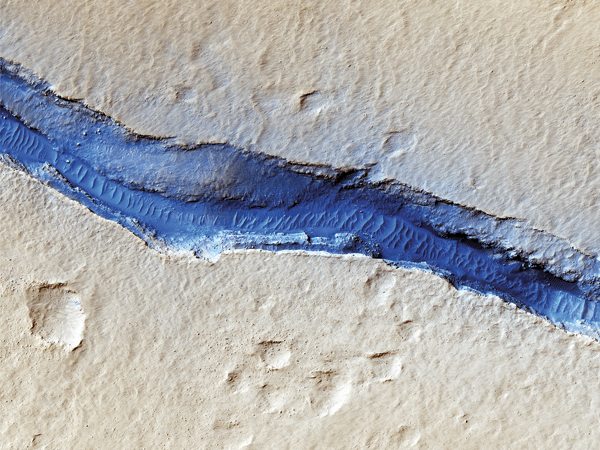The Red Planet has inspired a long history of brilliant mistakes.

NASA / JPL / University of Arizona
While preparing to give a talk recently about the impact of the New Horizons Pluto flyby, I re-read Mars and the Mind of Man, a 1972 book that I loved as a teenager. It arose from a panel discussion during which scientists Carl Sagan and Bruce Murray, together with science-fiction writers Ray Bradbury and Arthur C. Clarke, addressed the imminent arrival of Mariner 9 at Mars.
Previous Mars craft had been flybys, photographing only small areas. Mariner 9, our first orbiter, promised to revolutionize our understanding by laying bare the entire planet, which had for centuries been the subject of stories, fantasies, and overreaching attempts at scientific extrapolation. The book presents the transcript of the conversation, held as the craft rapidly closed in on Mars, as well as essays that each thinker wrote one year later (after Mariner 9 had thoroughly mapped the planet), reflecting on their earlier expectations and summing up what had been learned.
In the panel discussion, the sci-fi writers waxed poetic and mythical, invoking Edgar Rice Burroughs, H. G. Wells, Percival Lowell, and their own famous fictional Martian worlds. Bradbury declared: “[A]t this moment in history, it looks as if I must semi-retire to the wings . . . and hope to become part of some strange new mythology. This is probably true of many science fiction authors this week . . .”
Astronomer/exobiologist Sagan and geologist Murray were in sharp disagreement about the nature of the Red Planet. Sagan was bullish on the possibility of life, noting that Mars might have near-surface water. He described the planet as so poorly photographed prior to Mariner 9 that we might not yet have detected the equivalent of human civilization, let alone microbes or plants, if such existed.
Murray was mistrustful of Sagan’s optimism. He recounted the lengthy record of wishful thinking among scientists who wanted Mars to be Earth-like and life-friendly. He clearly placed Sagan’s ebullient speculations in this category. Murray pointed out that, given the pictures we had up to that point, Mars seemed much more like the cold and dead Moon than the vibrant Earth.
In the essays written a year later, their disagreements are not resolved. Moreover, it is remarkable how wrong both of them still are about Mars — judged by today’s knowledge. Sagan remains much more optimistic. He concedes that Mariner 9 did not find life and had definitively ruled out a human-level civilization. But he believes that the polar caps hold enough H2O and CO2 to intermittently give Mars an atmosphere as thick as Earth’s (wrong). He expresses optimism about the upcoming 1976 Viking landers’ search for life.
Murray, for his part, concludes that Mars never had a more Earth-like past but is in the process of coming to life geologically and may have an Earth-like future (wrong and wrong).
Mariner 9 played an important role in helping us achieve our current comprehension, but obviously these insights didn’t come instantaneously. The fact that these two brilliant scientists, when presented with so much good new data, both so completely misinterpreted them, makes me strongly suspect that whatever we think we know about Mars today will surely not appear so correct given another 50 years of exploration.
This article first appeared in print in the January 2017 issue of Sky & Telescope.
 0
0
Comments
You must be logged in to post a comment.